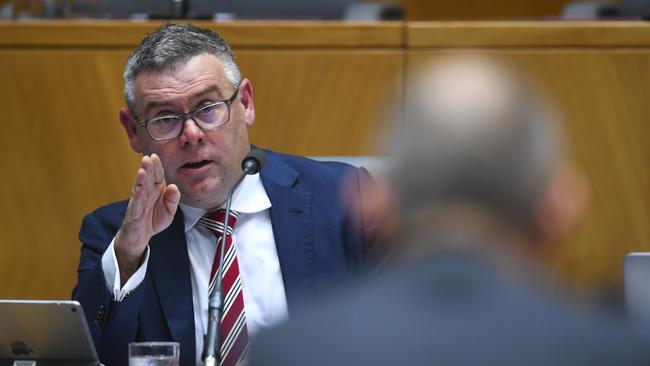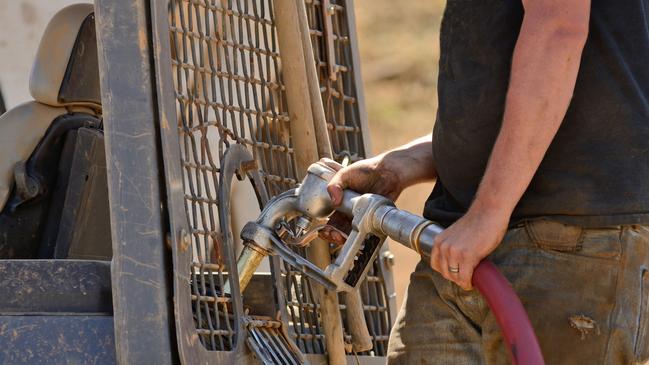Input costs hammer farm bottom lines
Soaring input costs are taking the gloss off farm incomes with nearly $6 billion predicted to be wiped from farm production values.

THE heavy price of spiralling on-farm input costs has been revealed, with producers predicted to lose $5.3 billion in the real net value of farm production nationally this financial year.
Few farm inputs were unaffected in 2022, from energy to diesel and other fuels, fertiliser and chemicals, to fodder and seed, haulage, spare parts and labour costs, while rising interest rates and mortgage repayments added to the burden.
According to Australian Bureau of Agricultural and Resource Economics and Sciences data, total farm costs are predicted to rise from the $62.9 billion recorded in 2021-22, to $66.3 billion in 2022 -23.
At the same time, the gross value of farm production is expected to dip slightly from a record $85.6 billion in 2021-22 to $85.2 billion in 2022-23.
ABARES found that scenario will likely reduce the national real net value of farm production from $24.3 billion in 2021-22 to $18.9 billion in 2022-23.
Federal Agriculture Minister Murray Watt told The Weekly Times that rising input costs, particularly for fertiliser, diesel and other manufactured farm products, were “one of a number of challenges our farmers faced in 2022”.

“While many farmers have benefited from high yields and even higher commodity prices, high input costs have definitely impacted on farm profitability,” he said.
“It’s clear there’s more work to be done in this space and it remains a priority for me this year.”
Meanwhile, the alarm bells are ringing for agriculture leaders after Russian President Vladimir Putin last week announced a ban of oil sales to countries, including Australia, that supported a price cap on Russian seaborne oil.
The ban is predicted to have far-reaching ramifications for global energy supplies, raising concerns about Australia’s national emergency stocks with the latest statistics showing only 24 diesel consumption cover days currently available. There are also only 63 current days of International Energy Agency net import coverage days at hand - two-thirds of the IEA standard of 90 days.
Some farmers pressed the self-preservation option during 2022, stockpiling more than their usual diesel supplies.
There are many complexities to the issues that have enveloped Australian agriculture over the past two years, but National Farmers’ Federation president Fiona Simson and Victorian Farmers Federation president Emma Germano agreed the fuel situation was emblematic of the source of many.
“Australians consumers totally depend on Australian farmers to keep growing their food and fibre and food security must be at the centre of every policy decision made by government,” Ms Germano said.
“How can we possibly say we have emergency fuel for the army, when if we don’t have fuel for farmers we as a nation we simply stop.”

The farm leaders said the government must continue to diversify export sources, increase local refining and manufacturing capability, reduce dependence on fossil fuels and increase strategic research into the true impacts of input costs on farmers.
Ms Simson encouraged government to pull levers to keep farmers profitable by “solving the uncertainty in our supply chains and input costs.”
“Covid and the AdBlue crisis taught us that anything can happen. We saw record increases in some inputs last year and we will continue to be dealing with uncertainty through 2023,” Ms Simson said.
“Government must step up in terms of proper investment and planning and provide long-term certainty for energy pricing, labour and supply chains to get the best deals on things they use on farms.”
The ABARES data also shows most farm inputs increased exponentially, with $7.3 billion spent on fuel, an increase from $6.2 in 2021-22 and almost double the $3.5 billion of 2020-21.
Fertiliser is projected at $4.1 billion, up from $3.6 billion.
Meanwhile, labour is set to cost farmers $6.9 billion and insurance interest payments exploded from $1.8 billion to $2.3 billion year-on-year.

Rabobank farm inputs analyst Vitor Pistoia said Australia’s heavy reliance on imported fertilisers – especially urea and potash – means global turmoil and market volatility will continue to factor heavily into the local fertiliser market, and that farmers would again face historically above-average fertiliser costs in 2023.
Mr Watt said while some causes of input costs were out of government control, he pointed to free TAFE places in agriculture and $500 million specifically invested to boost value adding in agriculture, forestry, fisheries, food and fibre as steps the Albanese government was taking to help ease the inputs crisis.
“In particular, our new laws to cap power and gas prices should take the sting out of rising energy costs. This is particularly important since gas is a key cost in making fertiliser and other manufactured items that our farmers heavily use,” he said.




